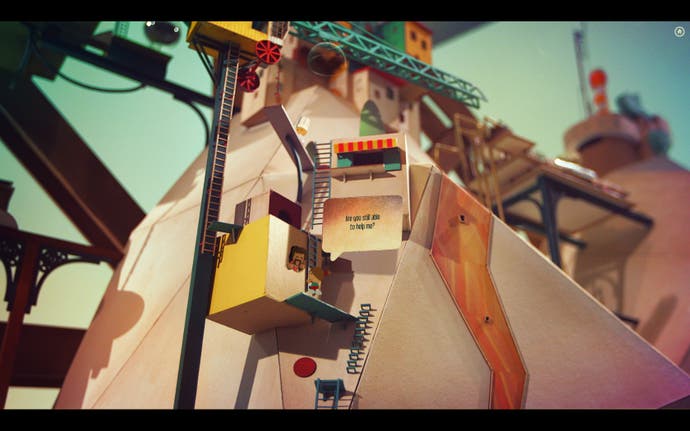Lumino City review
Crafty.
Architect: not a credit you expect to see in a game's post-victory crawl. Perhaps you should. Somebody had to blueprint the Citadel, the Cradle, the Skycrown battlements where I've bludgeoned so many demons and helped raise so many catapults. Games get built, even if the building blocks themselves are little more than light, and the scaffolds are scaffolds of code.
Lumino City has an architect - and it's the architecture that makes the most lasting impression here. Like Lume before it, State of Play's latest takes place against a backdrop of physical models, pieced together from cardboard and wiring and doll's furniture and scraps of felt. The narrative follows a girl named Lumi who's looking for her missing grandfather, but the real story is one of constant discovery and delight: each screen in this point-and-click puzzle adventure taking you somewhere ingenious and new.
It's a massive expansion in terms of scope and scale. Lume was a clever piece of work, but it had the look of an afternoon's fun that got seriously out of hand. Doors were drawn on walls in felt pen, and camera movements had a sweet and homely shakiness to them. Lumino City is sprawling and intricate, and every finial and fusebox speaks of a deep sense of craft. The metropolis you pick a path through has real variety, from sheer pasteboard cliffs where little cage-fronted shanties move in and out with the shifting of unseen cogwork, to a security hut that's built from an old camera. There's a wonderful eye for dreamlike detail: way up high on the arching back of a giant flywheel you'll find a ship that has come to rest, far from the ocean, while its captain slumbers in a sagging hammock. Elsewhere, there's a perfect Airstream diner, the size, most likely, of a milk bottle, resting near a clutter of copper piping. Like every good indie video game, Lumino City has a lighthouse, but this lighthouse has a lens of thick, deeply scored glass. It all adds up to an astonishing place to explore: a modern Trumpton or Camberwick Green.

And yet, if it's not quite half-built, it all feels a little incomplete. Lumino City's a fabulous location to potter around, but beyond the clever use of bric-a-brac and artful depth-of-field implementation lies a game that struggles to cohere. Although this is nominally a point-and-click, it's not actually a very good one. Its hot-spots are poorly placed, largely invisible, and annoying to navigate, and the design is not quite as skilled at leading your eye to the stuff that matters as it should be. Set-piece puzzles that task you with thinking about a location in its totality are simplistic, and instead you're often offered something more Laytony: a compendium of old-school brainteasers that take the form of switchboards that must be plugged in correctly, letters whose addresses require decryption, or pinball tables which need their bumpers re-arranged. There's always a link to the wider environment, but it doesn't necessarily convince.
A lot of this stuff is still fairly entertaining, and the analogue trappings of each puzzle are inevitably a delight, but Lumino City's challenges do seem to sit on the surface of the game rather than emerging from the design and the landscape in an organic manner. At best, they barely disguise the problem so many adventure games have, that the whole thing is, in essence, a sequence of doors waiting to be unlocked. At worst, they make the beautiful city at the heart of the enterprise feel like an interactive menu screen.
A similar approach worked fairly well in Layton, of course, but I don't think Layton's design was working against the grain of the fiction quite as much. Sure, you were solving a mystery, but you were also in the company of the sort of gent who simply loved chucking puzzles your way to pass the time and keep you sharp. Lumino City's busy skyline, however, suggests an air of constructive playfulness that its puzzles struggle to tap into. Every now and then you get a moment that really fits: a late-game sequence in which you scramble over a house, hitting switches that spin it around on a central axis, a Morse code episode in which you manipulate levers to send your message. There's too little of this, though, and there's too much stuff that feels like chummy filler pulled from a Victorian children's annual.
Such failings hurt more than they should because there's so much promise here. Promise of truly human games that bear the smudged fingerprints of the people who made them, and whose playgrounds truly exist somewhere, stacked in a shed or under the stairs. Lumino City is an interesting design sketch, then, but the real building work is yet to be done.

